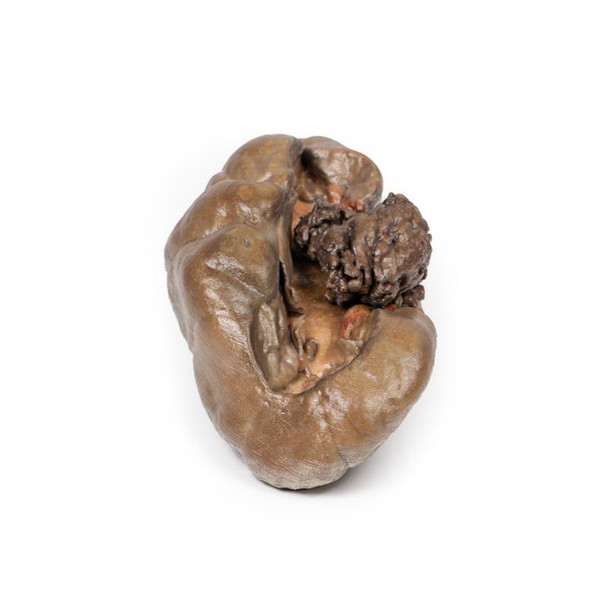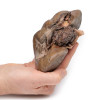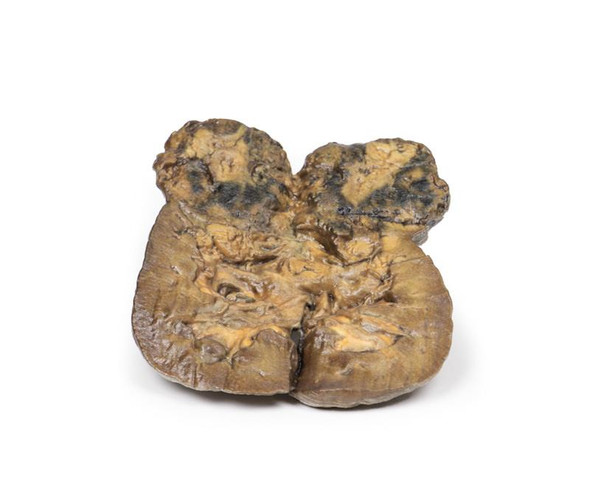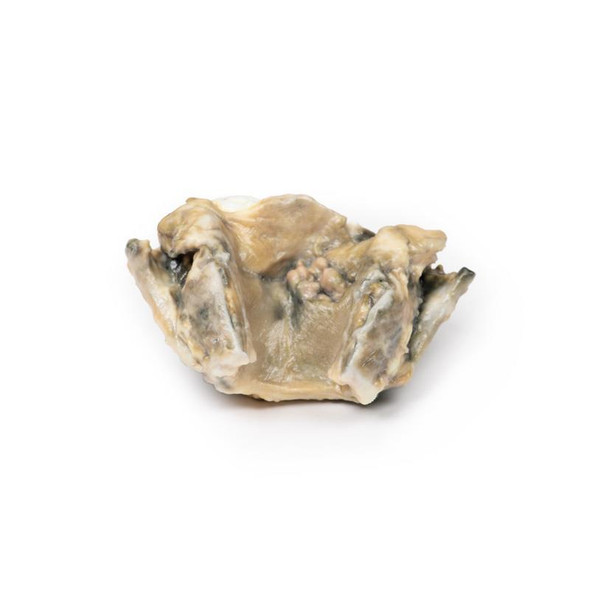Description
Clinical History
A 60 year old man who had worked in a paint factory for 40 years developed painless hematuria for one month. CT scan showed a suspected tumor in the left renal pelvis. He underwent a nephrectomy.
Pathology
This is the post-nephrectomy kidney. Of note the kidney maintains its fetal lobulation. There is a friable papillary tumor of 35mm in diameter projecting in the renal pelvis. The renal pelvis is visibly dilated due to this obstructing tumor. Histological examination revealed this is papillary transitional cell carcinoma arising in the renal pelvis.
Further Information
Between 5-10% of primary renal cancers arise in the urothelium lining the renal pelvis and calyces. These are similar to tumors which may arise in the ureter and urinary bladder. These tumors range from benign papillomas (rare) to well differentiated papillary carcinomas , which are common, and poorly differentiated tumors which can be either papillary, or flat and infiltrating.
Symptoms of these renal pelvis tumors tend to occur early. Due to the friable nature of the tumors hematuria is common. As they tumors grow obstructive symptoms such as palpable hydronephrosis and flank pain can be noticed. The tumors can sometimes be multiple; involving the pelvis, ureter and bladder.
There is an increased risk in developing urothelial tumors in individuals with Lynch syndrome and analgesic nephropathy. Smoking significantly increases the risk of developing urothelial tumors. Industrial chemicals called aromatic amines, such as benzidine and beta-naphthylamine, which are sometimes used in the dye industry, can lead to urothelial cancers.
Infiltration of the wall of the pelvis and calyces is common in theses tumor. The prognosis with infiltration is not good. 5 year survival rates vary from 50-100% for low grade and non-invasive lesions to 10% for high grade infiltrating tumors.
Advantages
- Anatomically accurate and identical to real specimen
- No ethical issues - not real human body parts
- Reasonably priced
- Available within a short lead time
- Reproducible, several identical prints can be used as a classroom set
- Can be produced in different sizes to cater for the needs of the teacher
Human Cadavers
- Access to cadavers can be problematic. Many countries cannot access cadavers for cultural and religious reasons
- Cadavers cost a lot money
- High cost for establishing your own plastination suite
- Wet specimens cannot be used in uncertified labs
- Dissection of cadavers is a lot of staff time and that is a cost
- Storage of cadaver material needs special refrigeration etc. which has coast
- If you want another specimen you have to start all over again
Plastinates
- Costs
- Ethical issues
- Timeframe for plastination process
- Many countries do not allow their importation
- One of a kind
Superior 3D print results compared with conventional methods
- Vibrant color offering with 10 million colors
- UV-curable inkjet printing
- High quality 3D printing that can create products that are delicate, extremely precise and incredibly realistic
Clear Support Material
- To avoid breakage of fragile, thin, and delicate arteries, veins or vessels, a clear support material is printed on such spots. This makes the models robust and can be handled by students easily.



















